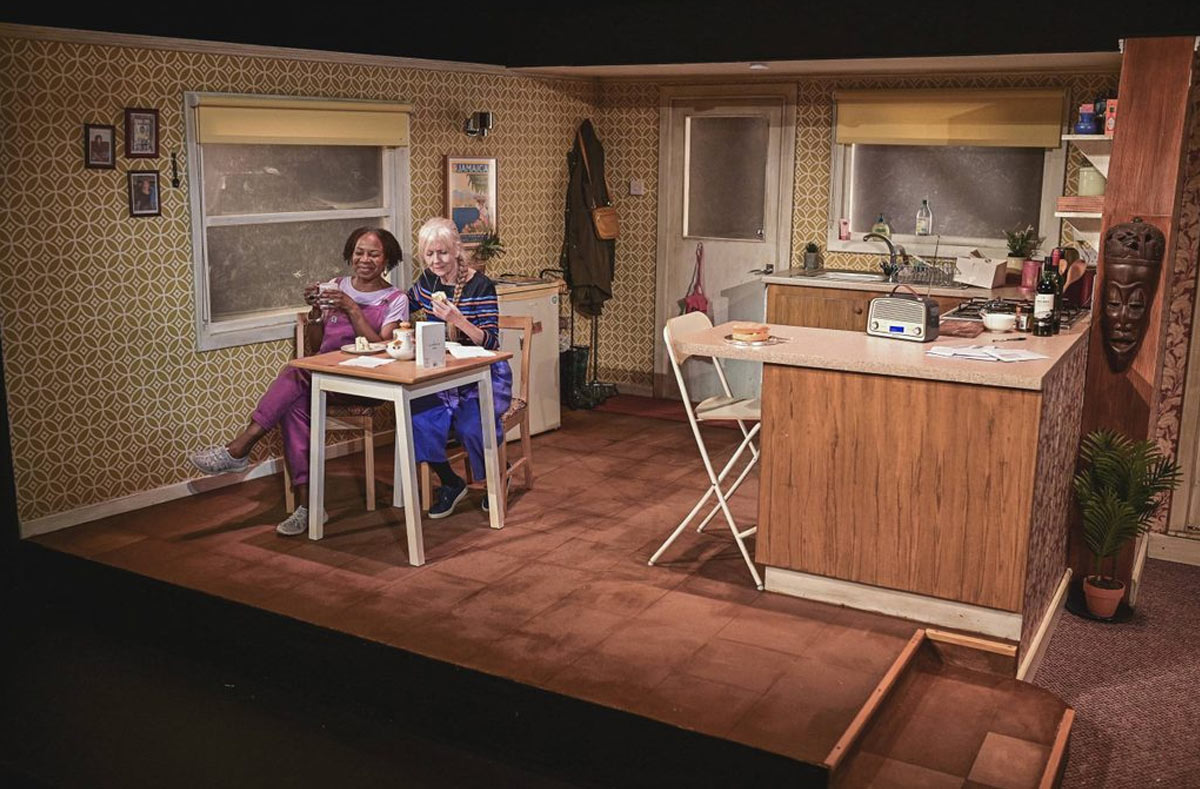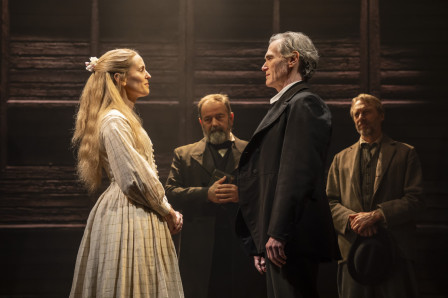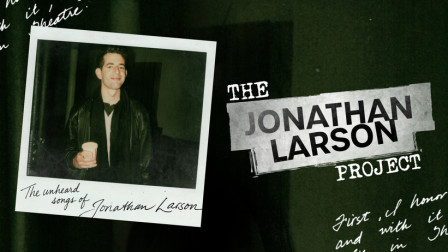Review: ES AND FLO at Kiln Theatre
Es and Flo (Liz Crowther and Doreene Blackstock) are two women in a loving relationship which started thirty-seven years earlier at Greenham Common during the heady days of the CND peace camp protests against Britain’s adoption of the Trident nuclear weapon system.
 Doreene Blackstock (Flo) and Liz Crowther (Es) in Es & Flo at Kiln Theatre. Photo Kirsten McTernan.
Doreene Blackstock (Flo) and Liz Crowther (Es) in Es & Flo at Kiln Theatre. Photo Kirsten McTernan.
As the pair begin to adjust to Es’ early onset dementia, her largely absent son Peter despatches his wife Catherine (Michelle McTernan) to arrange home help and organise his mother’s future welfare — which will undoubtedly include the sale of her home.
Initially, it appears the disconnect between mother and son has meant the younger couple have remained oblivious to the truth of Es and Flo’s relationship, with Catherine repeatedly referring to it as a friendship based on a lodger-who-helps-out arrangement. But the second half reveals unsettling truths around the historic behaviour of Peter’s father and more recently, his own treatment of his wife. As the disease progresses and the litany of incidents demand action, Beata (Adrianna Pavlovska) Es’ recently arranged Polish carer, together with her young daughter Kaisha (Renée Hart), assume added significance in the lives of all three women.
Jennifer Lunn’s story may not have the earth-shattering or groundbreaking melodrama of some gay-centric plays, but in director Susie McKenna‘s production it taps a rich vein of subjects — like the injustice of rules surrounding legal power of attorney for unmarried gay couples when one becomes incapacitated. It also displays a gentle and womanly desire to care and support women who have suffered or been damaged by the cruelty and dismissiveness of men, and demonstrates how they can heal through the practise of actively choosing one’s family.
An iconic Joan Armatrading poster adorns the homely sitting room wall of Libby Watson’s ground floor set. Its surprise (revealed in the second half) has been lurking behind a black-out curtain above and offers a clever letter-boxed solution to the need for a secondary playing environment late in the play. Prior to the reveal, the black-out serves as a projection backdrop for various images from the Greenham Common peace camp era, which is both a grim and sentimental nostalgia trip for anyone who (like this reviewer), is of a certain vintage.
Latest News

 Production images released for HIGH NOON
24 December 2025 at 10:54
Production images released for HIGH NOON
24 December 2025 at 10:54

 Full Cast Announced for SHADOWLANDS in the West End
22 December 2025 at 13:14
Full Cast Announced for SHADOWLANDS in the West End
22 December 2025 at 13:14

 Review Round-Up: OH, MARY! at the Trafalgar Theatre
19 December 2025 at 15:53
Review Round-Up: OH, MARY! at the Trafalgar Theatre
19 December 2025 at 15:53

 The Jonathan Larson Project announces London premiere
19 December 2025 at 10:31
The Jonathan Larson Project announces London premiere
19 December 2025 at 10:31
